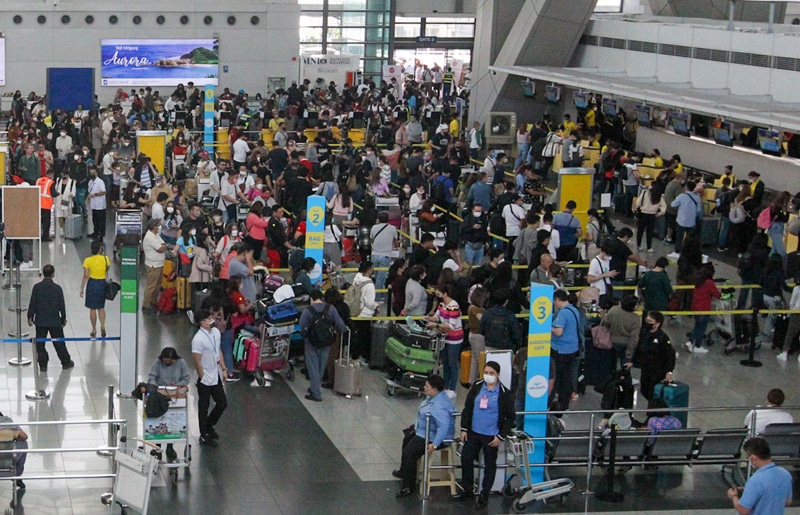At least 29 flights at the Ninoy Aquino International Airport (NAIA) were affected Sunday morning as the Civil Aviation Authority of the Philippines (CAAP) carried out the maintenance of one of its power equipment that has been identified as a factor in the New Year’s Day airport mess.
The CAAP said 28 departing flights and one arriving from Jakarta scheduled from 4:20 a.m. to 5:23 a.m. on January 22—accounting for some 3,500 passengers—were affected by the maintenance activity.
The agency said its engineering team and maintenance provider replaced the cooling fan of its second UPS or uninterruptible power supply.
“No congestion was reported at the four NAIA terminals,” the CAAP said.
Normal flight operations resumed at 6:09 a.m. Sunday.
“The CAAP is grateful to the affected passengers for their patience,” the agency said.
Senator Francis Tolentino, who was on board a plane going to Iloilo City before dawn on Sunday, lamented that airlines appeared to have not been notified of the supposed scheduled maintenance.
He said the pilot announced to the passengers that there was an “unannounced air traffic control maintenance.”
“Everyone was not allowed to take off and to land. So, I was at the airport for more or less two hours since 4:30 a.m. The boarding time was at around 4:25 a.m. The plane took off at almost 6:30 a.m.,” the senator said.
“There was no advice to the airlines because if there was advice, the passengers would not have been allowed to board the plane immediately.
The plane was already running and has already consumed fuel. The plane door was also already closed,” Tolentino added.
Meanwhile, 4Ps party-list Rep. Marcelino Libanan wants up to 50 percent of all flights in and out of the congested NAIA transferred to the Clark International Airport by 2025 in time for the projected full recovery of global air travel from the COVID-19 pandemic.
“Assuming all flights are divided evenly between NAIA and Clark by2025, only half of all flights would be cancelled, diverted or delayed in the event of a sudden emergency in either gateway,” he said.
“For instance, if NAIA has another air traffic system glitch, or if a large aircraft suddenly has a runway excursion there, only 50 percent of all flights would be disrupted once the other 50 percent is already operating out of Clark,” he added.





